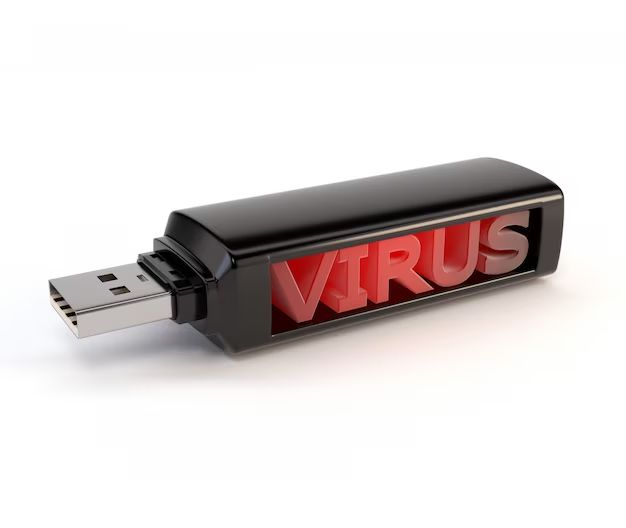USB defragmentation refers to the process of reorganizing data stored on a USB flash drive to optimize performance. When files are deleted or changed on a USB drive over time, the remaining data can become fragmented across different locations on the drive. Defragmenting the drive consolidates this fragmented data into contiguous blocks to speed up access times.
What Causes Fragmentation on a USB Drive?
There are a few key factors that can lead to fragmentation on a USB flash drive over time:
Deleting and Overwriting Files
As you delete files and save new files to your USB drive, the drive’s file system marks the deleted file’s sectors as available for new data. New files are written to these available spaces, which are often not sequential. This leads to fragmentation, where file contents are scattered across different parts of the drive.
Editing and Resizing Files
Modifying and resizing existing files can also create fragmentation. For example, if you open and re-save a document, the modified version may not fit perfectly in the same location. The file system has to find available sectors elsewhere to store the new version, leaving the old data still taking up space.
File System Structure
How the USB drive formats and organizes file storage can impact fragmentation. The popular File Allocation Table (FAT32) system is more prone to fragmentation over time than NTFS, for example. The way the system handles file storage optimizations like pre-allocation can also influence fragmentation.
Impacts of Fragmentation on USB Performance
Heavier fragmentation leads to noticeable impacts on USB flash drive performance:
Slower File Access and Transfer Times
When files are fragmented, the drive heads have to move between different physical locations to read the complete contents of a file. This additional movement slows down data access compared to reading contiguous blocks. Opening files, transferring files, and running programs from a fragmented drive take longer.
Inefficiencies for Larger Files
Fragmentation has a greater impact on large files because the drive must stitch together many scattered fragments rather than reading one contiguous block. Opening and editing large photos, videos, and documents see significant slowdowns as fragmentation increases.
Faster Wear on the USB Drive
The extra work of reading fragmented files across the USB drive causes more frequent writing operations. The increased read/write cycles amplify wear on the flash memory cells over time, shortening the usable lifespan of the drive. Heavier fragmentation can accelerate the degradation.
How to Defragment a USB Drive
Defragmenting realigns files into contiguous blocks to optimize performance. Here are some ways to defrag a USB flash drive:
Using Built-In Windows Tools
Windows includes the native Optimize Drives utility for defragmentation. To use it:
1. Insert your USB drive into your computer.
2. Open the Optimize Drives utility (search for “defragment”).
3. Select your USB drive in the drive list.
4. Click Optimize.
This consolidates all fragmented files on the drive.
Using Third-Party Defrag Software
Third-party defrag tools like Auslogics Disk Defrag or IObit Smart Defrag offer more advanced optimization like faster defrag speeds and scheduler options. They work similarly:
1. Install and open the defrag app.
2. Choose your connected USB drive.
3. Click to begin optimization.
The app will defrag and consolidate the drive for you.
Using the Command Prompt
You can also defragment drives from the Command Prompt using the command:
“`defrag VolumeName: /U /V“`
Replace “VolumeName” with your USB drive letter. The /U and /V switches provide progress reporting.
How Often Should You Defrag a USB Drive?
Most USB flash drive experts recommend defragging your drive every 1-2 months with moderate usage, or more frequently if you delete/edit files daily. Some key factors to consider:
Drive Usage Frequency
Heavier daily usage that involves regularly modifying documents, downloading files, and installing/uninstalling programs will accelerate fragmentation. Defrag more often.
File Types
Drives used for larger files like videos, photos, and multimedia are more impacted by fragmentation. Defrag these file types more frequently.
Drive File System
Drives formatted with FAT32 are much more prone to fragmentation over time than NTFS drives. FAT32 drives should be defragged more often.
Drive Capacity
Larger capacity USB drives tend to require more defrags over time. There is more total drive space for fragmentation to occur.
Tips for Minimizing USB Fragmentation
Alongside periodic defragging, some helpful tips can help minimize fragmentation:
– Manage larger files like videos/photos on separate drives
– Format drives with NTFS over FAT32 where possible
– Create separate partitions for operating systems/programs and personal files
– Consolidate smaller files into compressed archives
– Fill up drives less than 75% capacity to reduce likelihood of fragmentation
– Use USB 3.0/3.1 drives as they are less prone to fragmentation
Being thoughtful about file storage and drive formatting helps. But defragging periodically is still recommended to optimize any USB drive’s performance.
Conclusion
USB defragmentation is an importantoptimization that reorganizes fragmented data into contiguous blocks. This consolidation of data helps restore fast access times, improves file transfer speeds, allows efficient reading of large files, and reduces wear on the drive. Fragmentation naturally occurs with file deletions, edits, and system structures, but can be minimized with sound file management. Regular defragging using builtin or third party tools can help maximize the performance and lifespan of any USB flash drive.
